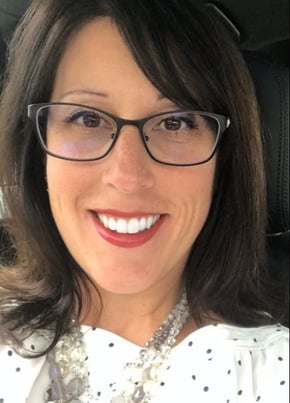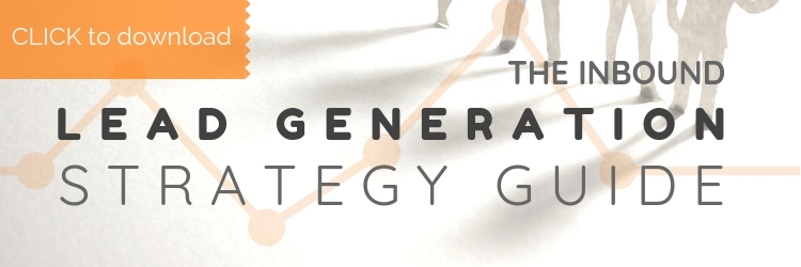Lead Generation isn't just about lead generation
You need closed deals.... because they pay the bills (not leads or impressions or social media followers). Success in lead generation comes from success in your business. So, I am sharing 11 important lead generation secrets that will ensure your success in generating them AND turning them into signed deals.
In this article, we're going to explore the lead generation process, proper treatment in sales, examples of successful programs, and we'll end by sharing a lead generation marketing plan template that you can take with you to get started on your own program.
The investments you make in lead generation should include more than just the rigormoral of generating leads. I don't care how pretty those reports are... or how sexy your videos make your business seem - if you're not closing more deals from your lead generation strategies, then you're not deriving the kind of value you invested in.
Your Targeting & Alignment Strategy
First stop - let's talk about how all of the pieces fit together, and how to get them moving in the same direction.
1. Personas
It's funny how often I come across businesses engaged in lead generation (or any kind of marketing at that), but aren't using a centralized targeting strategy. As in, they don't have their personas clearly defined... so forget about creating content that generates the right kind of leads when the "right kind of lead" has no definition.
Your target personas are your key decision-makers and influencers. Defining them early will put sales and marketing on the same page, and help you fill in knowledge gaps about how to get to them that you didn't know you had.
The perfect persona is built through data, past experiences, and most importantly, qualifying conversations with actual customers. This is the glue that binds, and where the most startling revelations occur.
2. Profiles
More businesses out there have the company profile articulated than they do personas, but it's still a missing piece to many. Profiles are the companies you're targeting. Personas are the individuals.
The best way to whittle this down is to isolate top ideal and non-ideal attributes of the businesses you target. Obviously, if you are a B2C, this isn't going to make as much sense as those targeting B2Bs.
Examples of important company profile characteristics include:
- Size of company (Revenue, employees, reach, etc)
- Industries and verticals
- Geographical locations
3. Sales Process
Part of your targeting strategy should include updates to the sales process to ensure opportunities generated through your lead-generation efforts are not wasted. After all, marketing success doesn't come from KPIs anymore... It's ALL about sales & growth. Additionally, sales is going to inform the quality of the leads being generated by what's actually closing. This is why technology AND processes are critical!
I would look at sales treatment as a whole, and create a formal roadmap (if you don't have one already... or update it if you do). Your roadmap should include stages to your deals as well as requirements to go from one stage to the next.
You may have reason to create multiple sales treatment strategies. For example, Orange Pegs has 4 different pipelines:
- "Sales Accelerator" - our normal pipeline where 90% of all deals land
- "Renewals" - deals that are 90 days away from contract expiration
- "Holding Pattern" - deals that aren't ready to close today, but have committed in one way or another
- "Consulting" - deals that involve individual consulting needs vs bundled programs
Each of these pipelines move at different paces... By having a holding pattern pipeline, we can remove deals that aren't heading toward a timely close, and it also helps us treat them as new opportunities when the timing is more appropriate. The latter was an important step toward improving outcomes since we didn't go into the second stage of discussions with a feeling that they were already closed (time kills all...). This meant more strategic connections, and fewer calls that consisted of "are you ready yet?"
4. Defining Success
Before you break ground with ANYTHING, take a minute to define what success looks like.
This could involve your revenue growth objectives as well as what a good lead looks like. For the latter, it's important to remember that "good" is relative to many things... such as whether a lead has the potential to close one day as well as when that one day is.
I like to define MQLs and SQLs at this stage (Marketing Qualified & Sales Qualified Leads - respectively). This way you have an objective measuring stick when those leads start coming in as well as clearly defined parameters, so we know what questions to ask on a form.
5. Technology & Automation
After you create your definitions, organize your process, and build the basic framework of your lead generation program, implement technology that helps sales close more deals while making it easier for you to measure success and identify trouble spots.
A "Modern CRM" is the way to go if simplicity and in-depth integration are important to you. (read more about Modern CRMs here)
Your Content Strategy
Once you've created your targeting strategy and aligned forces with sales, now it's time to create content that attracts and converts your most valuable leads.
1. Journey Mapping
"Journey Mapping" is an exercise that involves drilling down on individual personas to map out how they could find your website, and where they would go to become a lead.
Start by determining which persona you want to target, then determine at which stage of the buyer's journey you want to generate the most leads. Not sure what "buyer's journey" refers to or what the exact stages are? Read this article.
Then, take your target persona through the process of determining what would trigger their visit at each stage of their journey.
What are the positive reasons they'd come to your website? What about the negative reasons? How are they using Google to find their answers?
By the time you finish, you should have a plethorah of content ideas... you'll see offers, email subject lines, blog posts, and maybe even ad copy.
2. Your First Offer
I prefer to start at the bottom of the funnel when it comes to publishing the first offer, but many content marketers like to fill the top of the funnel first. We all have our reasons, but for me, it's all about quick wins. Attracting folks who are ready to buy is more challenging, and converting leads in that category won't be easy. However, when you are successful, you are more likely to close deals at a faster pace than if they are just now realizing they have a pain-point that your business can solve.
3. Your Editorial Calendar
Find the blog post titles and email subject lines that somehow support the promtion of your offer as well as nurture leads after they download.
4. Getting Eyes on the prize
The fact that your content is tied together by concept gives you an opening for strong SEO, but for most lead gen programs, it could take more time than you want to get eyes on it.
Fortunately, there is more than one way to skin a cat. Try the following:
- Social media distribution
- PPC ads
- Respond to other blogs with links (make sure you're not self-promotional though, and using them for educational purposes - otherwise, they won't last long)
- Equip your sales team with email snippets or templates
- Blast your existing database
Your Optimization Strategy
1. Identifying Problem Areas
As your leads start rolling in, you'll have all sorts of data telling you what is working and what isn't.
On the marketing side, you'll know how many impressions it takes to get clicks, and how many clicks it takes to get visitors, and how many visitors it takes to get leads, and how many leads it takes to generate Marketing Qualified Leads.
On the sales side, you'll know how many leads and MQLs it takes to generate a deal and how many deals it takes to close a sale.
Now is a good time to step back and identify opportunities for improvement.
2. Growth Hacking
"Growth hacking" is the process of improving outcomes by leveraging hard data. It involves creating data-supported hypotheses, setting up experiments, and measuring outcomes.
It can be applied to sales, marketing, and even product development. As long as it's measurable, it's growth-hackable.
CONCLUSION
By emphasizing the entire sales funnel, your investments in lead generation will have a tangible impact on the growth of your organization.
In this playbook, we break down the mechanics of the actual lead generation process, so you can turn your website into an engine of growth today:



